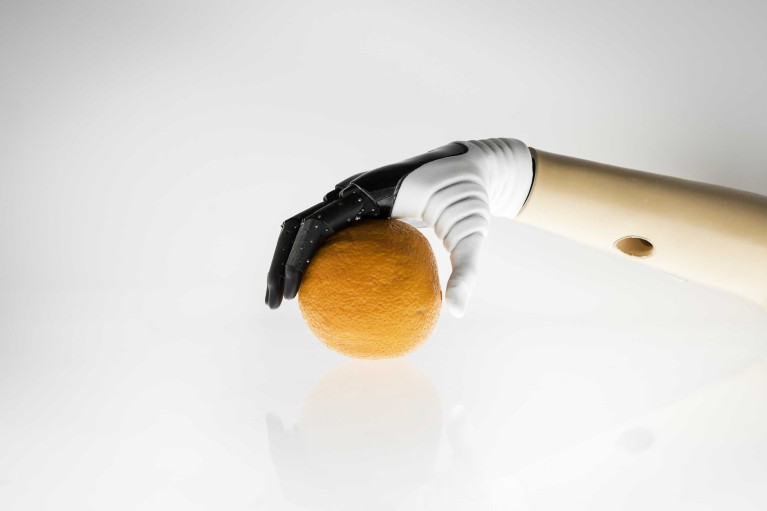
The main aim for prosthetic limbs is to offer a range of movements as close as possible to a natural limb.Credit: ddpstudio design and architecture
Researchers in Italy have taken a big step forward towards restoring realistic hand functions to amputees.
The development team, based at the Italian Institute of Technology (IIT), say that their ‘Hannes’ hand prosthesis can restore over 90% of functionality to people with upper limb amputations. This level of dexterity and natural behaviour of the resulting hand movements takes the technology of hand prostheses into new territory.
The Hannes hand uses technology called electromyography (EMG) to receive input from the user. Sensors attached to an amputee’s stump pick up the electrical activity in nearby muscles and use these to control the prosthesis. Some existing devices also do this, but the movements they can direct in prosthetic hands are very limited when compared to what a real hand can do. This causes around 25% of users to eventually abandon their use.
Various researchers had previously analysed in detail the wide variety of movements and different hand patterns used for grasping objects and broke those down into a small number of principal components. The IIT researchers worked closely with patients, orthopaedists and industrial designers to incorporate that knowledge into the new prosthesis.
“The main innovation is its dynamic adaptation when grasping objects, which makes Hannes very natural-looking and effective in performing activities of daily living,” says Matteo Laffranchi, lead author of the paper and R&D Coordinator of the Rehab Technologies Lab at IIT. He explains that existing prostheses that try to do the same use control systems that cause unnatural delays and poor grasping ability.
Laffranchi attributes Hannes’s superior grasping ability to two key technologies. The first is an innovative mechanism that allows it to quickly adapt to the shape of an object. The second is the use of a novel gearing mechanism that delivers individualised optimum movement to each finger.
Tests with amputees have displayed smooth and fast finger control with strong grasping ability, sufficient to operate tools in addition to performing the typical tasks of daily life.
"The Hannes team has done a wonderful job in creating a development process in which the patient is at the centre of the research. This has allowed them to deliver several much-needed improvements," says Claudio Castellini, leader of the Adaptive Bio-interfaces Team at the German Aerospace Center's Institute of Robotics and Mechatronics.
“Users like its effectiveness, ease of use and aesthetics,” adds Laffranchi. “One trial user is urging the team to get it to the market soon as he would immediately buy it to replace his current prosthesis.”
There is still room for improvement, however. “In its current version, three types of grasping can be performed by the device. To broaden the range of grasps the prosthesis can perform, we are now working on an improved version with more actuators,” says Laffranchi.
The researchers are now seeking investors and industrial collaborators to help make Hannes available at a competitive price.
